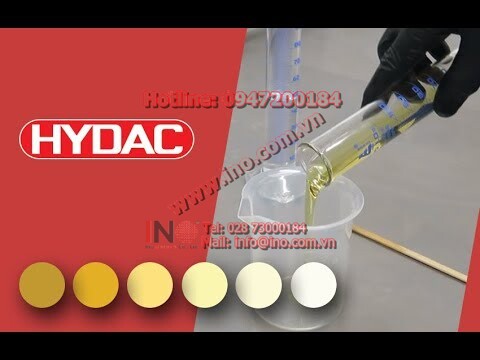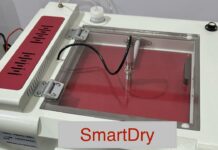How to use a MPC field test kit
Các câu hỏi, thắc mắc, thông tin liên quan đến sản phẩm được giới thiệu trong video dưới đây từ khâu mua sắm, lựa chọn, sử dụng, cài đặt hay thay thế, vui lòng liên hệ với INO Team để được hỗ trợ và tư vấn kịp thời.
– – – LƯU Ý – – -: Với những thiết bị không được liệt kê ở đây không có nghĩa là chúng tôi không hỗ trợ được bạn, công ty chúng tôi chuyên đề xuất giải pháp, tư vấn mua sắm và cung cấp thiết bị về cảm biến công nghiệp, đo lường và tự động hoá cho các công ty trong và ngoài nước.
Công ty TNHH Giải pháp và Công nghệ Đo lường INO, nhà cung cấp các thiết bị đo lường và tự động hóa công nghiệp.
When hydraulic and lubricating oils age and oxidise, the colour of the oil will change. This is due to the build-up of damaged and degraded elements in the oil. In Group 2 and 3 oils, varnish forms, this is a sign of oil degradation.
Varnish in oil causes untold problems in systems, such as:
• Sticking control valves and other operational problems
• Increased temperatures on bearings
• Decreased heat transfer in coolers
• Increased filter element consumption
• Decreased oil lifetime
By analysing this colour change we can check the level of varnish present in the oil and assign a number to the colour in order to quantify and report on its condition. This method is called Membrane Patch Colorimetry or MPC.
Colour differences between new and used oil can be seen. As oil is used, it’s appearance changes. It gets darker.
Tracking changes in the oil colour can assist in providing an understanding of the oil condition. By measuring these colour changes, we are able to gauge the vanish potential of the oil and also check efficiency of any systems used to remove varnish from the oil.
To accurately use the analyser, we need to set a “base line” and to do this, we analyse an original sample of new oil. (We do this with the new oil, as different oil brands and types are formulated with markedly different colours.)
In order to sample new oil as a baseline, follow these steps:
• add 50 ml of new oil into the beaker and diluted with 50 ml of new solvent
• add a membrane on the top of the glass flask using tweezers
• place the funnel above and secure it with a clamp
• pour the mixture into the funnel
• turn on the vacuum pump, so that the new oil will be drawn through the membrane
• use a solvent to remove the oily residue from the patch
• turn the vacuum pump off
• remove the membrane using tweezers and place it on a petri slide
Repeat the same process with the used oil.
It is first necessary to calibrate the analyser to a new filter patch. This is necessary as the background colour of patches will be different.
The next step is to measure the colour of the new oil and set up this value as the baseline.
Then, measure the colour of the used oil and reference it against the colour of the baseline or standard new oil. This is done by selecting the appropriate parameters within the instrument.
The delta E value shown is the colour difference between the new and used oil sample. This delta E value is the MPC value.
ΔE* describes the difference in colour between new and aged oil, this allows us to record and track chemical degradation through the build-up of varnish, we can also measure improvement in the oil condition through the removal of varnish.
Thanks for watching this video; you can find more information on our website www.hydac.com.au.
Web: www.ino.com.vn | Mail: info@ino.com.vn
Tel: (+84) 028 73000184 | Hotline: 0947200184
Website: http://www.ino.com.vn Website: http://www.ino.vn
Please visit INO YouTube Channel for more Video
https://www.youtube.com/inomeasure




















